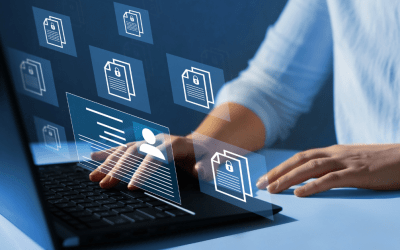The world of technology is an ever changing one with cybersecurity being the epitome of that. Cybersecurity is an area in which the inability to adapt to change has visible and almost immediate negative consequences. It is because of this that even though it is hard to accurately predict what may happen in the future, we still need to work with what we have to make sure we are able to adapt to any future possibilities and scenarios. The last year has seen many organisations scratching out the “new” from the “new normal”. Rapid change has been the order of the day (or year) which has left us with some food for thought about what we can expect going into 2022.
Ransomware
First on the list is a familiar foe. Ransomware attacks surged in 2021 and can be expected to continue doing so in 2022 as bad actors take advantage of enterprises with insufficient security measures. Large organisations such as Acer and Accenture have not been spared but even if you’re a small to mid-size business, it is still important to have solid ransomware defence and guard against the possibility of an attack. To jog your memory, Ransomware is a type of malware that encrypts files once inside an organisation’s network. Doing so makes the files unusable, as well as the systems that rely on that information to run, enabling malicious actors to demand a ransom in exchange for decryption. According to a survey conducted by one of DataGroupIT’s partners, Kaspersky, more than half of ransomware victims in 2021 paid up to regain access to their information.
The rapid acceleration to remote and hybrid working models created opportunities for ransomware gangs to take full advantage. We fully expect them to continue doing so, the same old attacks, just on new targets. As long as the attacks continue to work, history will continue to repeat itself. Automated logging and monitoring to maintain visibility into events when they happen is critical. Greater visibility empowers organisations to recognise when something is amiss in a matter of seconds, not weeks or months. Reducing the time to respond not only minimises the impact of the cybersecurity incident, but could also deter threat actors from targeting your organisation in the future. Tapping into the power of proactive cybersecurity with self-learning AI is something enterprises should be seriously considering in 2022.
According to leading cybersecurity company Palo Alto Networks, legacy systems are especially vulnerable, “Traditional network and endpoint security simply haven’t kept up with rapidly evolving threats”. Ransomware gangs are now a real force to reckon with and it is pivotal for modern enterprises to stay a step ahead of them.
Mobile Devices
Mobile devices are an easy path that a hacker can take to exploit cybersecurity vulnerabilities purely because nearly everyone uses smart mobile devices. In most cases, people use their smart phones for both work and personal activities that include banking and shopping. This makes them very attractive targets to bad actors whether they can access sensitive work information or attack the mobile user themselves.
Smart phone penetration will only increase with time as they become a must-have in navigating every day life. Unfortunately, bad actors are aware of this and continue to invest time in finding new and subtle ways of exploiting this. Almost Every Organisation Experienced a Mobile-related Attack in 2020. The move to mass remote working during the COVID-19 pandemic has made mobile devices a fundamental business tool as remote employees are increasingly using their smartphones to access corporate assets and perform critical work tasks. To keep business data secure, protecting the mobile workforce has entered mission-critical levels according to our partner Checkpoint Software Technologies who view every business as a mobile business.
At this point, we’ve highlighted two concerning issues that have both seen an increase due to the fact that an enterprise’s security perimeter is no longer confined to its office buildings. Working from anywhere is here to stay but the risk that comes with it remains an unwelcome guest. Cybersecurity mesh extends to cover identities outside the traditional security perimeter and create a holistic view of the organisation. It also helps improve security for remote work. In its simplest form, cybersecurity mesh sees the traditional security approach pivot away from the ‘walled city’ approach and evolve into a modular approach that views network assets as nodes with their own individual perimeters.
The centralised system then allows for a singular security entity to oversee, monitor, and control assets in the network. Where previously a breach of the perimeter wall permitted access to the entire system, the cybersecurity mesh approach allows for the containment of threats as a vulnerable node remains a threat only unto itself and no other asset in the network is affected. Gartner’s 2021 report states cybersecurity mesh is its top trend. It also predicts that by 2025, cybersecurity mesh will support 50% of identity and access management requests, paving the way for a more distributed, mobile, and adaptive access management model.
Personal Data
According to Gartner, by the end of 2023, modern privacy laws will cover the personal information of 75% of the world’s population. GDPR was the first major legislation for consumer privacy and everything snow-balled from there. The sheer scope of these laws means enterprises will be managing multiple data protection legislation in various regions. Your clients will want to know what kind of data you’re collecting and how it’s being used. Enterprises will need to focus on automating privacy management systems. Standardising security operations using the most relevant legislation as a base, and then adjusting for individual regions is a good first step. GDPR would serve as a good base even though as much as it has its origins in the EU, any company that is marketing goods or services to EU residents needs to comply with the new regulation regardless of their location. As mentioned, this would only serve as a starting point, enterprises can then adjust to suit relevant regions.
The protection of personal data is especially critical in the financial industry. With so many attack vectors in play, financial services providers require comprehensive monitoring capabilities to proactively detect, neutralise and remediate cybersecurity risks and threats in real time before transactions and data are compromised. In this regard, improving comprehensive threat visibility via unified security management solutions and data risk analytics tools can deliver better preemptive protection against sophisticated and advanced threats. Netskope offers real-time data and threat protection to help you prevent data loss, exfiltration, and inadvertent public exposure while meeting compliance demands.
The Human Element
Lastly, the need to improve security posture through educating and training employees across the organisation will continue to grow. Human error unfortunately remains the weakest link even possibly undoing all of the work done by generally robust cybersecurity technology. From not patching systems or remediating vulnerabilities, to falling victim to phishing scams, humans present the greatest risk for organisations.
A study from Stanford University Professor Jeff Hancock titled “Psychology of Human Error” revealed that nine in 10 (88%) data breach incidents are caused by employees’ mistakes and that employees are unwilling to admit their mistakes if organisations judge them severely. It is not sufficient for organisations to take a reactionary stance when it comes to dealing with cybersecurity threats that stem from mistakes made by their employees. In 2022, expect to see an increase in proactive efforts around employee education programs to increase awareness around user error that can unintentionally wreak havoc for an organisation.
In closing, as our security posture improves, the bad actors adjust accordingly. Cybercriminals have begun to form ecosystems littered with professional enterprises. Cybersecurity is literally a “no-days-off” responsibility. Throughout 2021 we have spoken extensively about self-learning AI, automated detection & response and the value of managed services providers because they will play a huge role in allowing cybersecurity executives and cybersecurity teams to have some wiggle room to plan ahead, and stay ahead of the enemy in 2022.
About DataGroutIT
DataGroupIT is Africa’s leading Value-Added Distributor (VAD). By partnering with the best selection of established and emerging technology vendors across the globe, we, provide complex solutions for any size business, including Enterprise and SME markets across the African continent.
Our product portfolio offers comprehensive solutions for IT Security, Infrastructure and Enterprise Software.
We are fully committed to our business partners. Channels & vendors success is our #1 mission. Our professional teams across Africa deliver exceptional sales, presale, logistic, marketing and financial support that create the ultimate platform to accelerate our business partners’ success.
Contact Us today to find out more.




